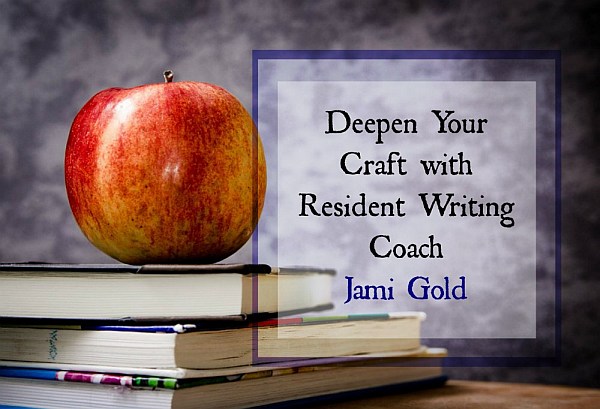Story Pacing: How Can We Ensure Our Pacing Is “Good”?

It’s time for another one of my guest posts over at Angela Ackerman and Becca Puglisi’s Writers Helping Writers site. As one of their Resident Writing Coaches, I’ve previously shared:
- insights on how to approach an overwhelming revision
- how to increase the stakes (the consequences for failure) in our story
- 7 ways to indicate time passage in our stories (and 2 issues to watch out for)
- how to translate story beats to any genre
- how and why we should avoid episodic writing
- how to find and fix unintended themes
- how “plot” holes can sneak into our characters and worldbuilding
- how TV shows can help us learn to hook our readers
- what we can learn from stories that successfully break the rules
- how to ensure revisions aren’t creating rips in our story
- how to create strong story goals that won’t slow our pacing
- how to keep readers supportive through our characters’ changes
- how to use bridging conflict to kick off our story’s momentum
With this turn for another coaching article at WHW, I’m exploring story pacing. We’ve all heard about it, but what does pacing mean and how can we make sure our story’s pacing is strong? Let’s take a look…
Pacing: It’s Not about Fast vs. Slow
We’ve probably all seen articles about pacing, as it’s an important aspect of making our story a page-turner and un-put-down-able. But pacing is also one of those writing craft concepts that’s hard to grasp.
“Good” story pacing isn't about the pace being fast or slow but about being strong Click To TweetPacing isn’t about how quickly events happen in a story. Instead, pacing is about how readers experience the story unfolding. It’s not about the speed of the river, but rather the strength of the current, as the flow carries readers along from one page and chapter to the next.
Many articles explain how to speed up (or slow down, by doing the opposite) our story’s pacing. However, far too many of those articles leave writers with the impression that fast pacing = good pacing, and that’s definitely not the case. It doesn’t help that it’s also harder as a reader to recognize when a story’s problems are caused by a too-fast pace.
What Problems Does Bad Pacing Cause?
We can probably all think of examples of when we—as readers—experienced bad pacing that was too slow:
- the story dragged/was boring
- nothing seemed to happen/nothing changed
- we weren’t interested in and/or weren’t patient enough to care about what happened to the story or characters
In addition, even if it’s harder to recognize as a pacing issue, pacing can also be bad if it’s too fast:
- we never connect to the characters and/or not emotionally compelling (little-to-no introspection or emotional touchpoints in favor of all-action-all-the-time)
- story was confusing (transitions and/or explanatory context missing or cut short)
- story felt hectic or chaotic (constant action with no “breathers”)
We often recognize bad pacing when we see it, but good pacing tends to just exist. If it’s good, we don’t notice it, and that makes it harder to figure out what makes it good.
Good Pacing Is Strong Pacing
Rather than focusing on the speed of our story’s pace, we might be better off focusing on the strength of our story’s flow:
- A river with a weak current gets lost in eddies and floating objects are stranded along the shore.
- A river with a strong current can speed up and slow down as the obstacles change but still carry floating objects along.
If we’ve ever been on a raft or canoe/kayak on a river, we’ve seen how the river’s current often slows down in advance of a boulder blocking the way, as though gathering its strength before crashing over or around the obstacle. As writers, we might use that same technique in our storytelling, slowing down before the “worst” happens—such as a scene of introspection, details of the showdown setting, etc.—to increase tension and keep reader interest.
Any pacing speed can be the “right” speed, and any speed can be the “wrong” speed. But what feels right—what feels natural and unforced and smooth—is a strong pace.
Writers Helping Writers: Resident Writing Coach Program
Storytelling Decisions: What’s the Right Pace for Your Story?
Come join me at WHW above, where I’m sharing:
- how pacing is different from the speed a story takes place (and one way they’re related)
- 5 factors that can affect the right pace for our story
- 8 elements that create our story’s pace
- how we can create a strong pace
- the most important aspect of finding the right balance for our story’s strong pace
Can you think of stories with a too-slow pace? What about a too-fast pace? Can you think of other problems a too-fast or a too-slow pace can cause for a story? Do you struggle to find the right balance? Or do you have any insights about pacing? (My WHW posts are limited in word count, but I’m happy to go deeper here if anyone wants more info. *smile*)
P.S. If you missed my post last week, check out how you can donate to a great literacy cause and receive a signed book of mine in thanks!
Pin It
Thanks and great advice!